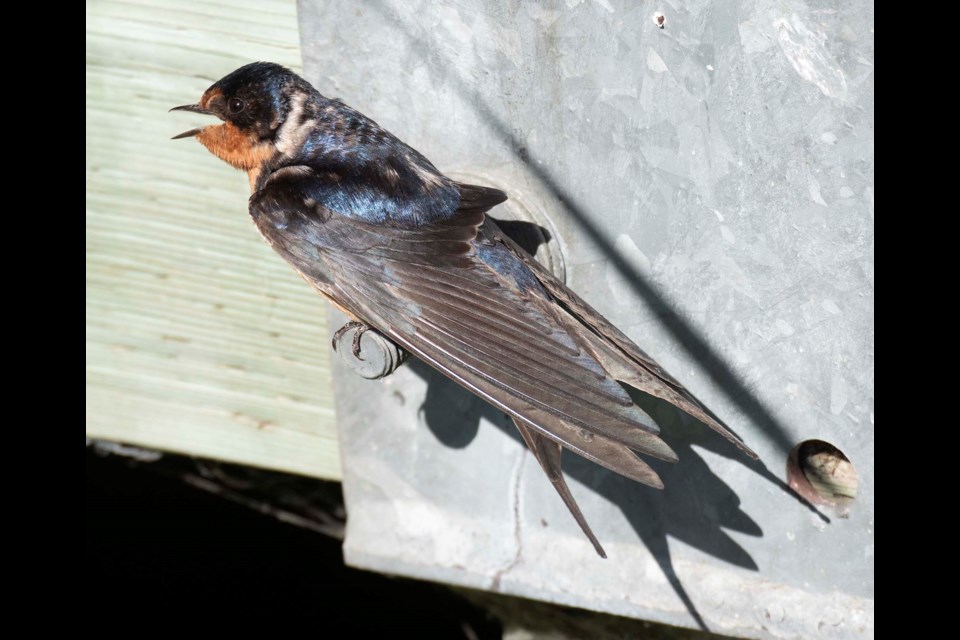Black terns, barn swallows, and other once-common Alberta birds have been in a population tailspin since the 1970s, a new national study shows — one that could be reversed with conservation and climate action.
Birds Canada and Environment and Climate Change Canada released the 2024 State of Canada’s Birds report Oct. 8. Previously published in 2012 and 2019, the report takes a comprehensive look at population trends in 463 Canadian bird species since 1970.
About 36 per cent of the birds examined declined in abundance in the last 50 years, the study found. This includes mainstays such as the American coot (down 38 per cent), house sparrow (down 74 per cent), and evening grosbeak (down 83 per cent, much of which happened from 1996 to 2006).
Grassland birds have been in a nosedive since 1970, with their numbers now down 67 per cent, the report found.
One example was the western meadowlark, said St. Albert birder Percy Zalasky. When he was a youth, meadowlarks were so common in Alberta that you could see one on every fence post. Now, they’re far more rare, with this study showing their numbers have been cut roughly in half in the last 50 years.
“We’ve long since lost a lot of those birds,” Zalasky said of grassland species in St. Albert.
Jody Allair, a technical reviewer of the study with Birds Canada, said the main reason for the crash in grassland birds was habitat loss, much of which was because of the conversion of native grasslands to crops. About 180,000 hectares of grasslands are lost from the Canadian Prairies each year — equivalent to a football field every three minutes.
“That rate of loss is unsustainable for these birds,” Allair said.
Big busts
Aerial insectivores saw the second biggest population drop after grassland birds, falling some 43 per cent, the report found. This includes many birds often seen zipping about the John E. Poole Wetland, such as barn swallows (down 74 per cent), black terns (down 82 per cent), and bank swallows (down 95 per cent). Pesticide use and a general fall in insect numbers were likely factors, Allair said.
“A lot of these birds are also long-distance migrants,” he continued — a group that has seen a 29 per cent decline since 1970.
Climate change was a major cause, Allair said. Warming climates have caused a mismatch between when insects hatch and when migrating birds arrive, driving down reproductive success. Climate change also means more turbulent weather, making those long trips north and south more treacherous.
Shorebirds have been similarly affected by climate change, having dropped 42 per cent since 1980, Zalasky noted. He singled out the Hudsonian godwit (down 94 per cent) as one shorebird that’s become harder and harder to find around St. Albert.
Big booms
Waterfowl, birds of prey, and wetland birds have actually increased in number since 1970, the report found. The once-endangered bald eagle has seen an 800 per cent jump in its numbers, for example, while Canada goose numbers have ballooned by nearly 9,000 per cent. Allair said these success stories prove that conservation and wetland preservation efforts work.
There are many steps people can take to protect Canada’s birds, Allair said.
“Cats are one of the big bird killers,” he noted, killing roughly 100 million in Canada each year, so they should be kept indoors whenever possible.
Residents can help birds by participating in shoreline clean-ups, growing native plants in their yard, and lobbying leaders to take action on climate change, the report noted. In addition to eating less meat (which reduces greenhouse gas emissions), Allair said Canadians can also support range-fed beef, as range-fed cows help preserve grasslands.
Birds are beautiful, important parts of our planet, and it’s our fault that their populations are declining, Allair said. Helping them recover will benefit both humans and the rest of the environment.
The 2024 State of Canada’s Birds report can be found at naturecounts.ca/nc/socb-epoc/main.jsp.




